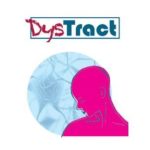The Dystonia Translational Research and Therapy Consortium: DysTract is led by Prof. Klein (Lübeck) and Prof. Volkmann (Würzburg). We represent a number of German university hospitals and research institutes perfoming research on dystonia issues. The overall aim of the consortium is to improve the clinical management of persons with the rare disorder dystonia based on sound scientific evidence and eventually pave the path to a curative treatment as a future perspective. Currently ten different projects (P1-10) are part of the research program of our consortium.
To improve the clinical management, a clinical study (P1, Prof. Volkmann, Würzburg) will be performed comparing DBS to botulinum toxin injection and a German Dystonia Registry (P2, Prof. Klein, Lübeck) will be established. These two core projects will exchange data and patients and are connected and supported by the IT platform (P3, G. Antony, Marburg).
These core projects will be fed and interact with four groups of subprojects.
First, there is the genetic project (P5, K. Lohmann, Lübeck) that aims at elucidation of novel genetic causes of dystonia. P5 will use samples from German Dystonia Registry and feed back the respective genetic information.
The clinical projects will closely collaborate, focus on different genetic and non-genetic forms of dystonia, and use a large spectrum of multimodal investigations. They aim at the definition of endophenotypes by neurophysiological and structural neuroimaging (P8, A. Münchau, Lübeck), at the elucidation of network activity in dystonia (P9, A. Kühn, Berlin), and the classification of endogenous (genetic) and exogenous (environmental) triggers on patients with musician´s dystonia as an example (P10, E. Altenmüller, Hannover).
In addition, there will be two different model systems used to better understand the pathophysiology of dystonia, i.e. cellular (P4, P. Seibler, Lübeck) and animal models (P6 and P7, M. Sendtner und C. W. Ip, Würzburg). In SP7, we will partly address the same research questions as in SP8-10 but use dystonic rats and mice for investigations. SP6 will serve as a resource for transgenic mice and rats and aims at the characterization of the synaptic architecture in these animals. The results from the studies in animals may impact on the clinical study (P1) and vice versa.
Finally, fibroblasts, iPS cells and iPS cell-derived neurons (P4) will be used as cellular models to better understand the molecular changes leading to dystonia. In future, these cells might serve as a test platform for the evaluation of novel, preferably curative therapeutics.

